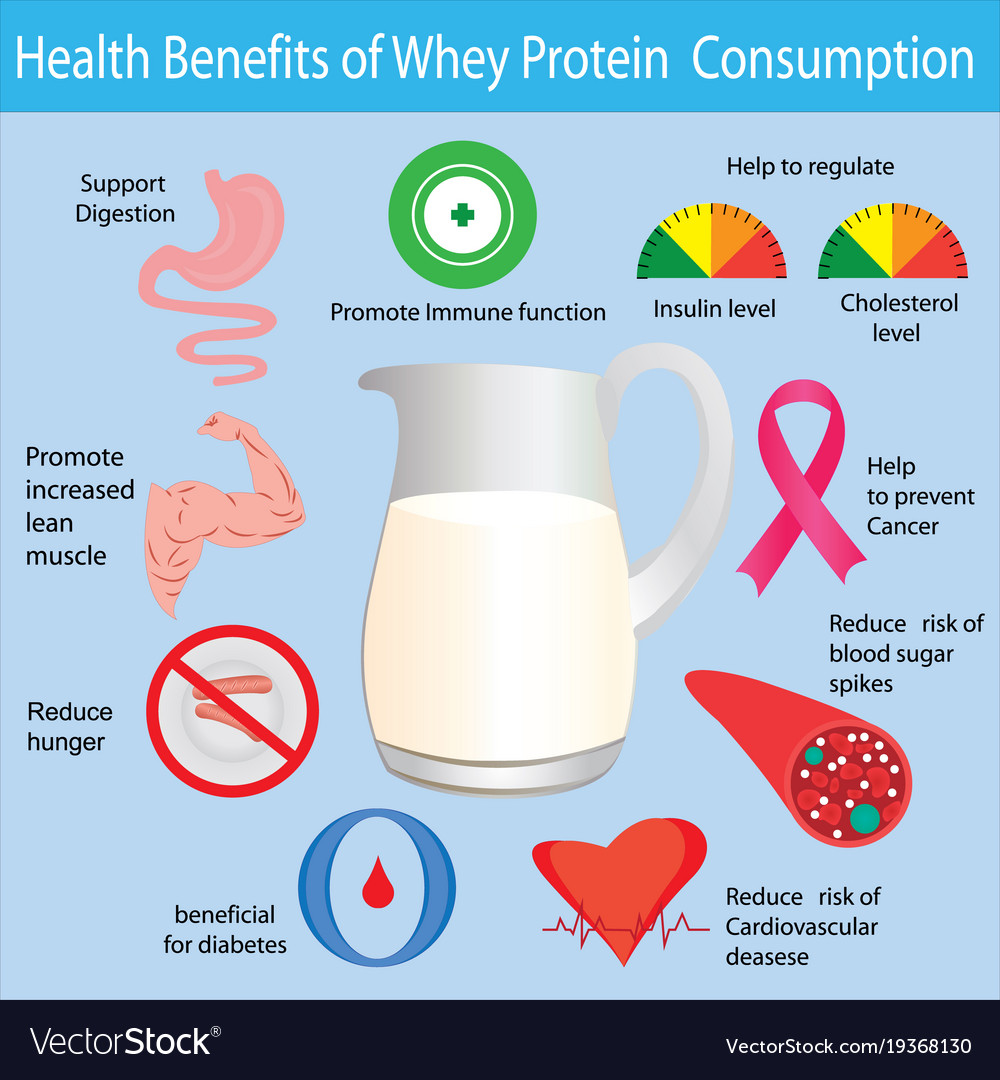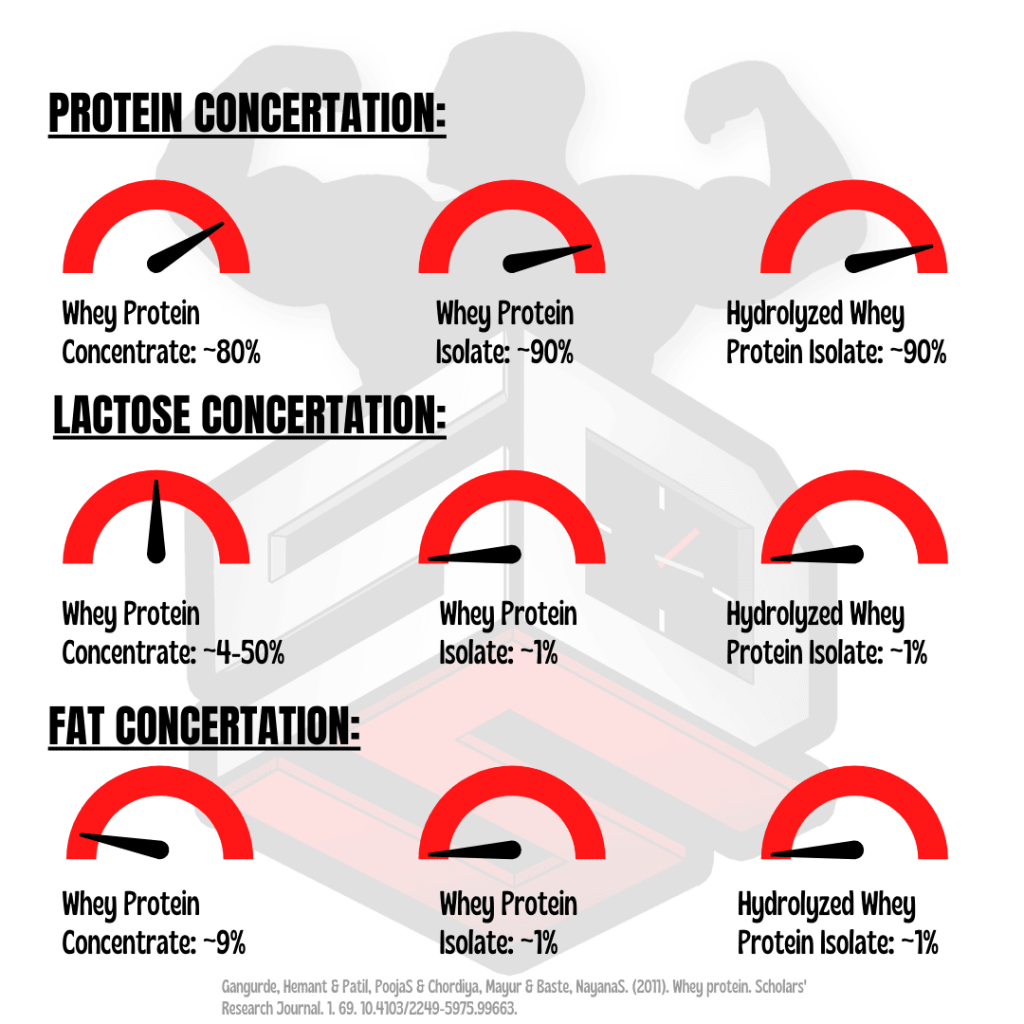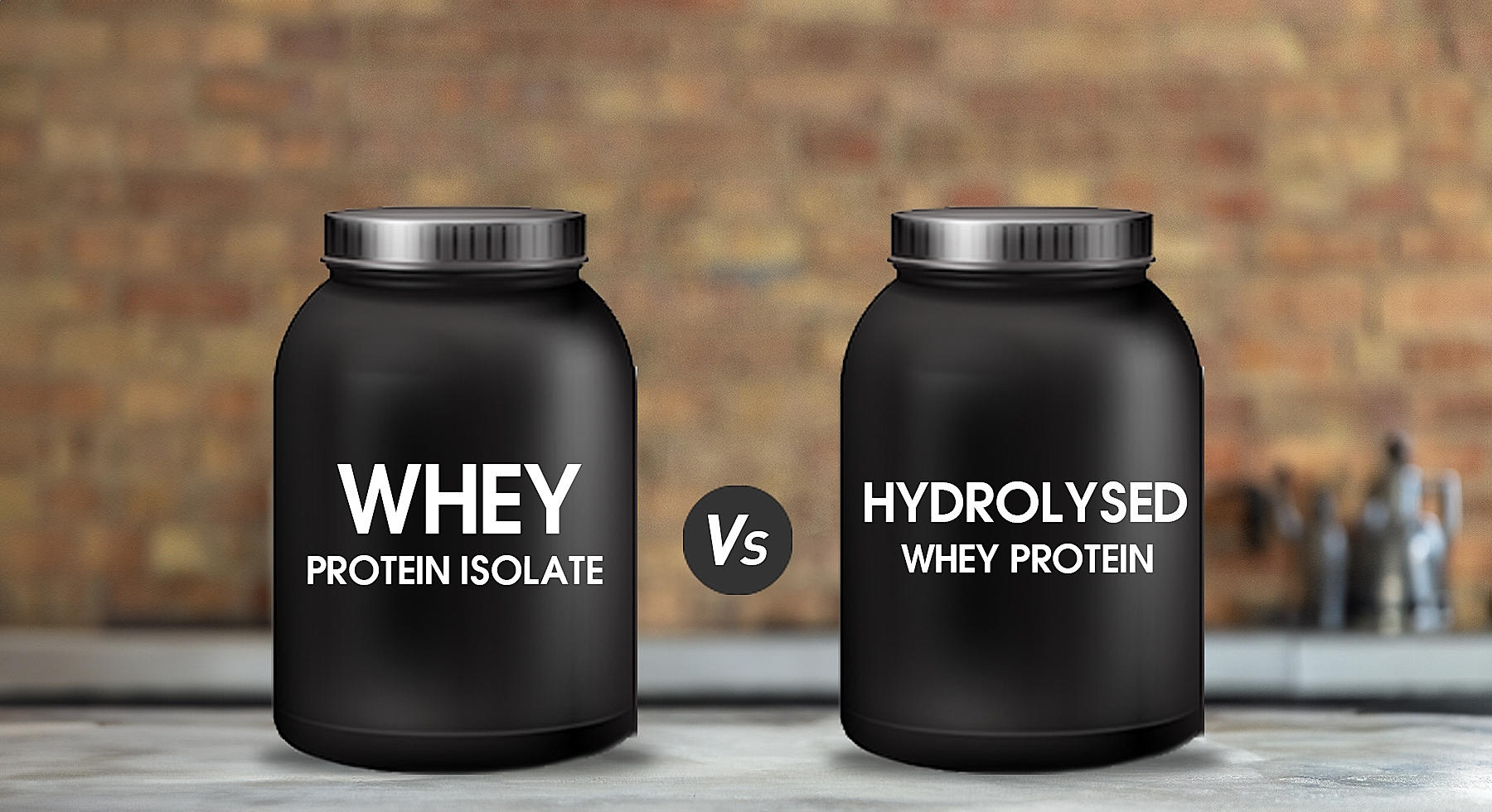Whey protein concentrate vs isolate vs hydrolysate: a detailed comparison

Table of Contents
The Dietician 101: What to Know about Whey Protein
This guide will explain the differences among these three types of whey, including your best type based on your fitness goals, dietary restrictions, and budget.
It has a very high-quality profile for amino acids and is useful as a prompt foe hypertrophy, body builders as well as weightlifting professionals have adapted it into their diet. But with different types on the market — concentrate, isolate, and hydrolysate, to name a few — selecting one that best fits your needs can be daunting.
Whey protein is no longer the sole province of bodybuilders. It has become an omnipresent — if not dominant — nutritional tool, adopted by athletes, fitness buffs and even the sedentary at work, wanting to boost their daily intake of protein.

What Is Whey Protein? Where Does It Come From?
Its byproduct (whey) is leftover after making cheese. In cheese-making, milk is processed to separate it into solid curds (which form cheese) and liquid whey. Previously, this liquid was wasted but researchers found that it has many nutritional properties including a full protein with all nine essential amino acids.
Liquid whey can then be processed in several different ways to achieve different types of whey protein supplements, each with its own unique characteristics and benefits:
- Filtration: Removes varying amounts of fat, lactose, and other components
- Drying: Converts liquid whey into powdered form
- Hydrolysis: Breaks down protein chains into smaller peptides (for hydrolysates)

The Three Types of Whey Protein

Whey Concentrate
It is the purest form, comprising 70-80% protein, and it also includes varying levels of lactose, fat, and healthy nutrients.
Key Features:
- 70-80% protein content
- Contains 3-4g of lactose per serving
- Includes beneficial compounds like immunoglobulins
- Most affordable option
- Better taste profile due to fat content

Whey Isolate
A more processed form that filters out more fat and lactose, resulting in a higher protein percentage per serving.
Key Features:
- 90%+ protein content
- Very low lactose (less than 1g per serving)
- Minimal fat content
- Higher cost than concentrate
- Cleaner, faster absorption

Whey Hydrolysate
Pre-digested whey protein that undergoes hydrolysis, breaking down protein chains for faster absorption.
Key Features:
- 90%+ protein content
- Pre-digested protein chains
- Fastest absorption rate
- Premium price point
- May have slightly bitter taste
Head-to-Head Comparison
| Feature | Whey Concentrate | Whey Isolate | Whey Hydrolysate |
|---|---|---|---|
| Protein Content | 70-80% | 90%+ | 90%+ |
| Lactose Content | 3-4g per serving | ≤1g per serving | Trace amounts |
| Fat Content | 2-8% fat | ≤1% fat | ≤1% fat |
| Processing Level | Minimal | Moderate | Extensive |
| Absorption Rate | Moderate (≈8-10g/hour) | Fast | Very Fast |
| Bioactive Compounds | High | Medium | Low |
| Digestibility | Good | Very Good | Excellent |
| Typical Price Range | $ | $$ | $$$ |
Understanding Absorption Rates
The rate at which your body can absorb and utilize whey protein is an important factor when choosing between the different types. Research has shown:
- Whey protein is generally absorbed at approximately 8-10 grams per hour
- Hydrolyzed whey has shown faster absorption rates due to its pre-digested nature
- Faster absorption can be beneficial immediately post-workout
- Slower absorption may be preferred for sustained amino acid delivery
However, this also suggests that the total amount of protein ingested in one meal cannot infinitely increase muscle protein synthesis due to the limitations of absorption by the body.

How Whey Protein is Manufactured

Notably, the manufacturing process is key to establishing the protein content, lactose levels and overall quality for the final product. This is how each stuff is processed:
Whey Protein Concentrate
Membranes filter liquid whey to extract some of its water, lactose, and minerals. This process – ultrafiltration – generates whey concentrate with 70-80% protein which preserves a greater amount of milk functional compounds.
Whey Protein Isolate
Whey isolate is subjected to further crossflow microfiltration, ion-exchange chromatography, or other filtration techniques to eliminate virtually all fat and lactose. The result is a product containing 90% protein or greater.
Whey Protein Hydrolysate
The process begins with whey isolate (which has a lower fat content than traditional whey powder) and then hydrolysate is produced by enzymatically hydrolyzing, or pre-digesting, longer protein chains into short peptides. It does make it easier to take it in, but can leave it more bitter.
Advantages For Different Wellness Objectives
Muscle Building

All variations of whey protein contain high quality protein and essential amino acids, both of which are important for building muscle mass. Yet each has a particular set of advantages:
- Whey Concentrate: Offers additional growth factors and bioactive compounds that may support overall anabolism
- Whey Isolate: Provides more protein per gram, which is ideal for those limiting overall calories while maximizing protein intake
- Whey Hydrolysate: Superior for immediate post-workout consumption when rapid amino acid delivery is crucial for recovery
Research has shown that whey protein supplementation, when combined with resistance training, leads to greater gains in lean muscle mass compared to placebo or other protein sources.
Weight Loss
Protein plays a crucial role in weight management by increasing satiety and preserving lean muscle mass during caloric deficits. The best options for weight loss are:
- Whey Isolate: Lower in calories, fat, and carbs, making it ideal for strict calorie-controlled diets
- Whey Hydrolysate: Rapid absorption can help with post-workout recovery while on a calorie deficit
- Whey Concentrate: Still effective but contains more calories from fat and lactose
Research shows that high-protein diets are associated with both fat loss and the preservation of a higher metabolic rate during caloric restriction..
Recovery
Recovery after an intense workout is one of the most crucial aspects of your fitness journey. Each type of whey protein offers specific recovery benefits:
- Whey Hydrolysate: The fastest-absorbing option, making it optimal for immediate post-workout consumption
- Whey Isolate: Quickly absorbed and contains minimal digestive irritants, making it suitable for sensitive stomachs
- Whey Concentrate: Contains additional immune-boosting compounds that may support overall recovery processes
Research from the International Society of Sports Nutrition confirms that consuming whey protein within the post-exercise “anabolic window” optimizes muscle protein synthesis and recovery.
Special Dietary Needs

Those with specific dietary restrictions should consider the following when choosing whey protein:
- Lactose Intolerance: Whey isolate or hydrolysate are preferred as they contain minimal lactose (less than 1g per serving)
- Calorie Restriction: Whey isolate provides the most protein per calorie
- Digestive Sensitivities: Hydrolysate is pre-digested and may cause less gastrointestinal discomfort
Whey isolate has about 90% less lactose than whey concentrate, but people with severe lactose intolerance may want to consider plant-based proteins as an alternative.
Health Benefits of Whey Protein in General
Immune Support
Whey proteins, especially concentrate, contain immunoglobulins and lactoferrin that support immune function.
Heart Health
Research suggests whey protein may help reduce blood pressure and improve lipid profiles in some individuals.
Metabolism
Whey protein has a higher thermic effect than carbs or fats, potentially boosting metabolic rate.
Bone Density
Some studies indicate whey protein may help maintain bone mass, especially when combined with resistance training.
Blood Sugar Control
Key immune-boosting components of whey proteins are immunoglobulins and lactoferrin in particular of concentrate-type.
When consumed with high-glycemic meals, whey protein may help moderate blood glucose levels.
Antioxidant Support
Whey protein also increases levels of glutathione, which is one of the most powerful antioxidants in the body.
How to Select the Best Type of Whey for Your Needs

Factors to Consider
- Fitness Goals: Building muscle, losing weight, or general health will influence your choice
- Dietary Restrictions: Consider lactose intolerance or calorie restrictions
- Budget: Price increases from concentrate to isolate to hydrolysate
- Digestibility: How well your body tolerates different protein types
- Taste Preference: Concentrate generally tastes better than isolate or hydrolysate
Quality Indicators
- Third-Party Testing: Look for supplements verified by independent testing organizations
- Transparent Labeling: Clear disclosure of protein content per serving
- Minimal Additives: Fewer artificial flavors, colors, and sweeteners
- Amino Acid Profile: Complete disclosure of BCAA content
- Manufacturing Practices: Look for GMP (Good Manufacturing Practices) certification
Recommended Whey Type By Goal

Muscle Building & Strength
Best Choice: Whey Concentrate or Whey Isolate
Concentrate provides additional growth factors while isolate delivers more protein per serving. For post-workout, hydrolysate offers the fastest absorption.
Weight Loss
Best Choice: Whey Isolate
Provides the highest protein-to-calorie ratio with minimal fat and carbohydrates, supporting lean muscle maintenance during caloric restriction.
Athletic Performance
Best Choice: Whey Hydrolysate
Rapid absorption makes it ideal for recovery between training sessions or competitions when quick protein delivery is essential.
Digestive Sensitivity
Best Choice: Whey Isolate or Hydrolysate
Both contain minimal lactose, with hydrolysate offering pre-digested proteins that may be easier for sensitive digestive systems.
Budget-Conscious
Best Choice: Whey Concentrate
Offers excellent nutritional value at a lower price point, making it suitable for those on a budget who don’t have specific dietary restrictions.
General Health
Best Choice: Whey Concentrate
Contains beneficial immunoglobulins and bioactive compounds that support overall health and immune function.

Expert Analysis: Which Whey is Best?
Based on the comprehensive analysis of scientific research and nutritional data, here’s our expert assessment of which whey protein is best for your specific situation:
Best Overall Value: Whey Protein Concentrate
For the majority of workout junkies and the general population looking to add some extra protein into their diets, however, whey concentrate is the most balanced in terms of nutritional benefit, flavor, and cost. Protein is not the only benefit though, with supplementary bioactive compounds and immune enhancing properties at play as well.
Perfect for: General fitness, muscle building on a budget, and overall health support
Best For Weight Management: Whey Protein Isolate
Whey isolate is much higher in protein content and lower in fat and carbohydrates, thereby making it the best choice for someone who wants to maximize their protein intake for minimal calories. It’s also appropriate for people with mild lactose intolerance.
Perfect for: Weight loss programs, lean muscle maintenance, and those with mild lactose intolerance
Protein Hydrolysate: The Best for Fast Recuperation
Athletes in top shape, who train more than once a day, or anyone with an easily irritated digestive track, would find whey hydrolysate the fastest to absorb and easiest to digest. Being pre-digested, it can provide amino acids to muscles more rapidly.
Perfect for: Professional athletes, intense training schedules, and individuals with significant digestive issues

The Bottom Line
Whey protein is not a one-size-fits-all product. This also makes it hard to know which one is the best for you, as it hinges on your personal aim, dietary requirements and financial outlay. Many hardcore fitness devotees having multiple varieties on hand — using isolate or hydrolysate immediately postworkout and concentrate at other points in the day.
Conclusion
Whey protein supplements have become a staple for the athlete, the adventurous sportster, and the health-savvy person. Regardless of whether you opt for concentrate, isolate or hydrolysate, you are getting a high-quality protein source that is full of essential amino acids and BCAAs.
Keep in mind that supplements are just that — supplements to an already balanced diet. So although whey protein can assist you to obtain your protein intake within adequate levels on the food, it is important to combine it along with a healthy, proper whole food diet, lots of water, and a good training program.
So, if you know about the differences between whey isolate vs concentrate vs hydrolysate, you can be in a better place to decide which one is the best whey protein to suit your fitness goals, dietary requirements, and budget. A good whey protein supplement canhelp with muscle growth, recovery and other health benefits, making it a useful additionto your nutrition plan.
For more blogs visit : luxira.in
Best Whey protein Cencentrate
Best Whey Protein isolate
Best whey protein Hydrolysate


